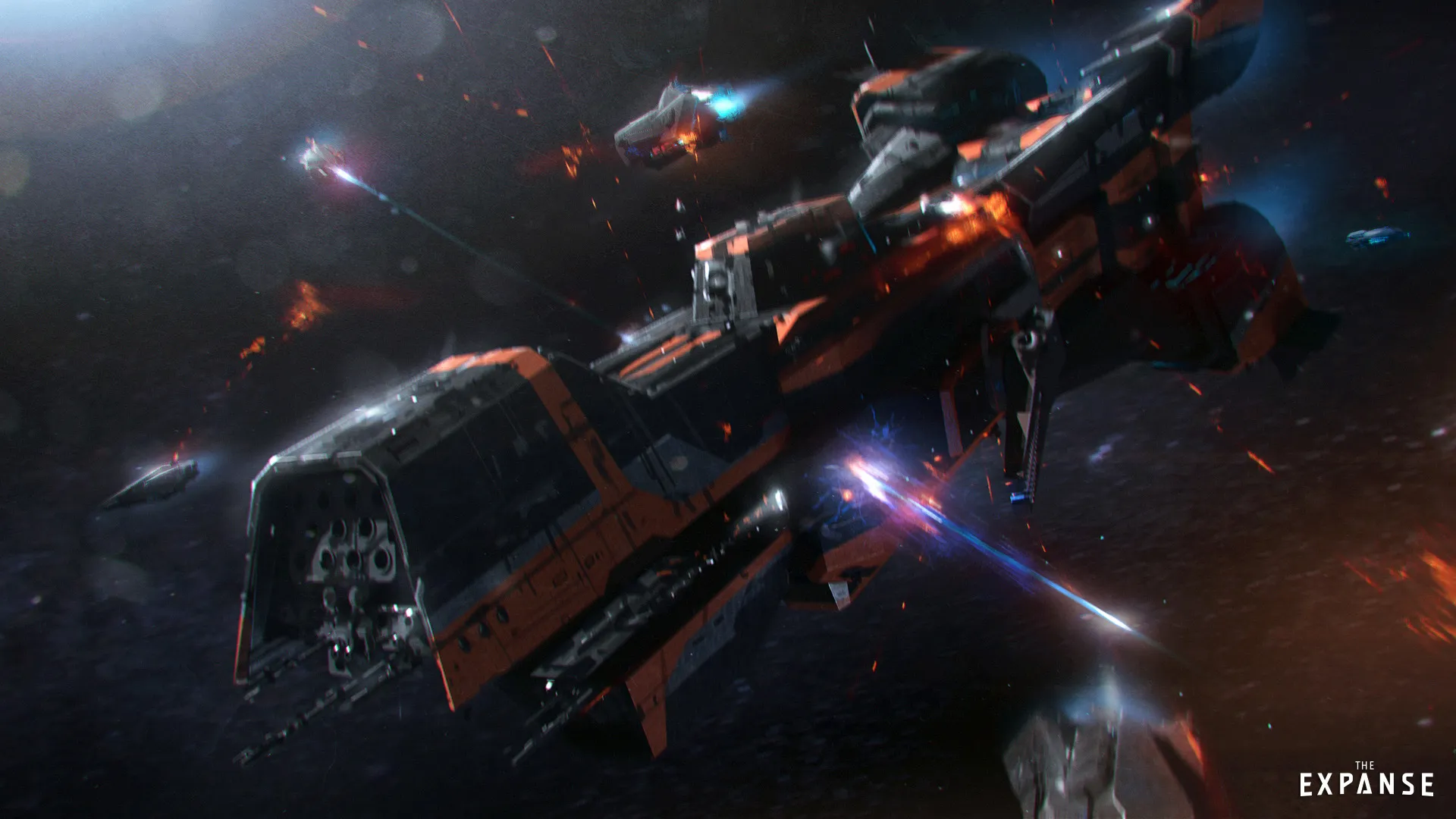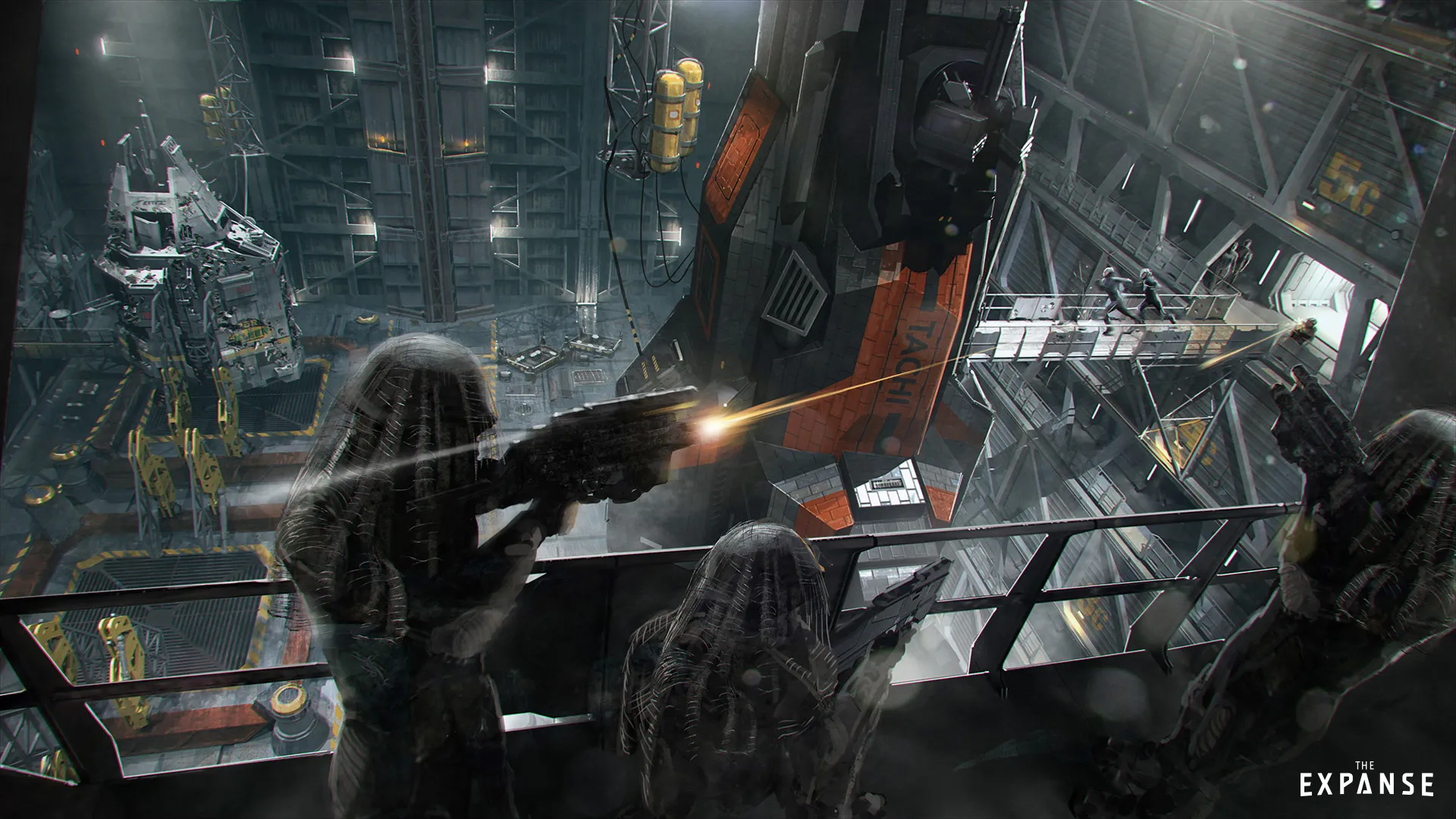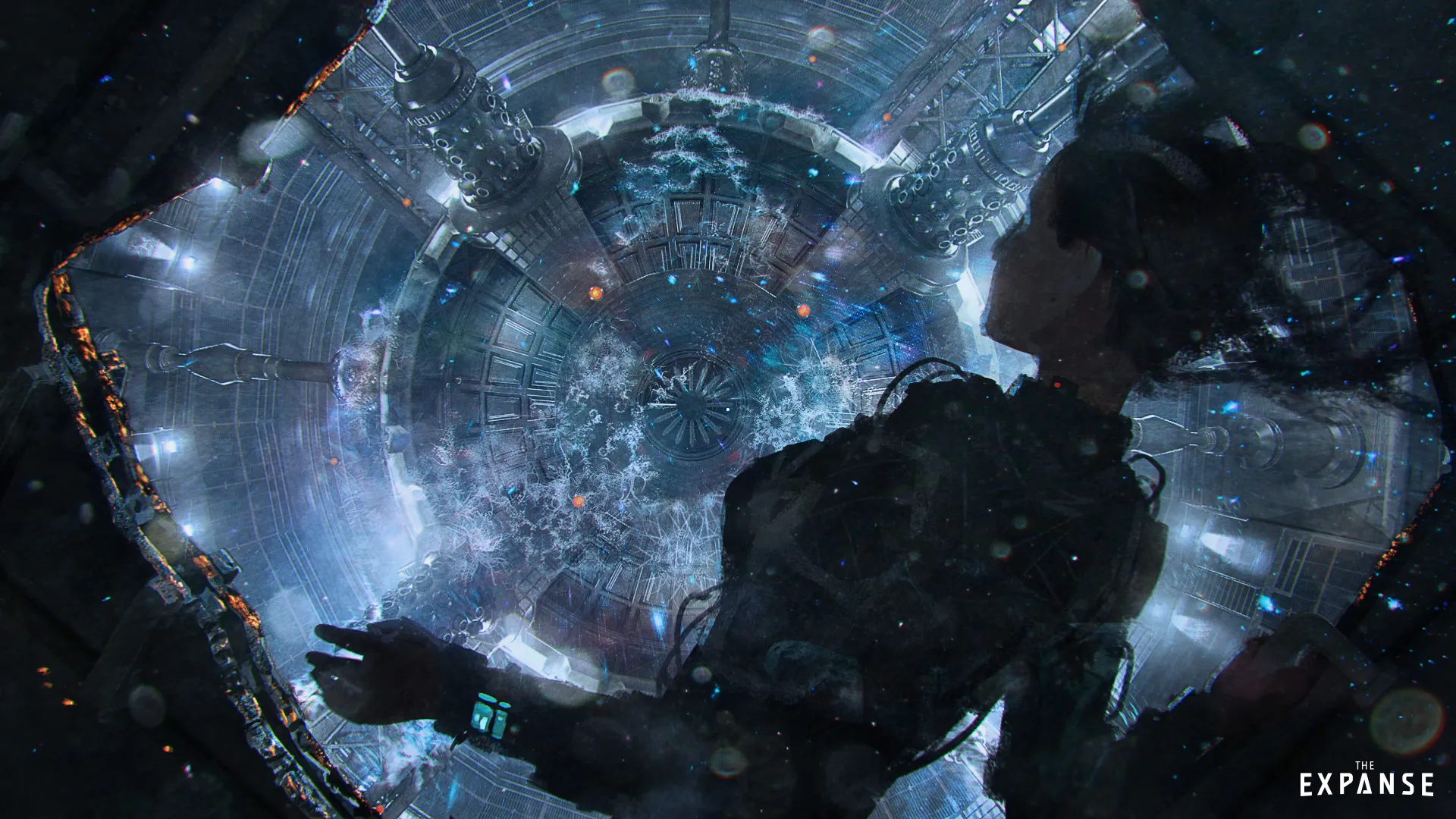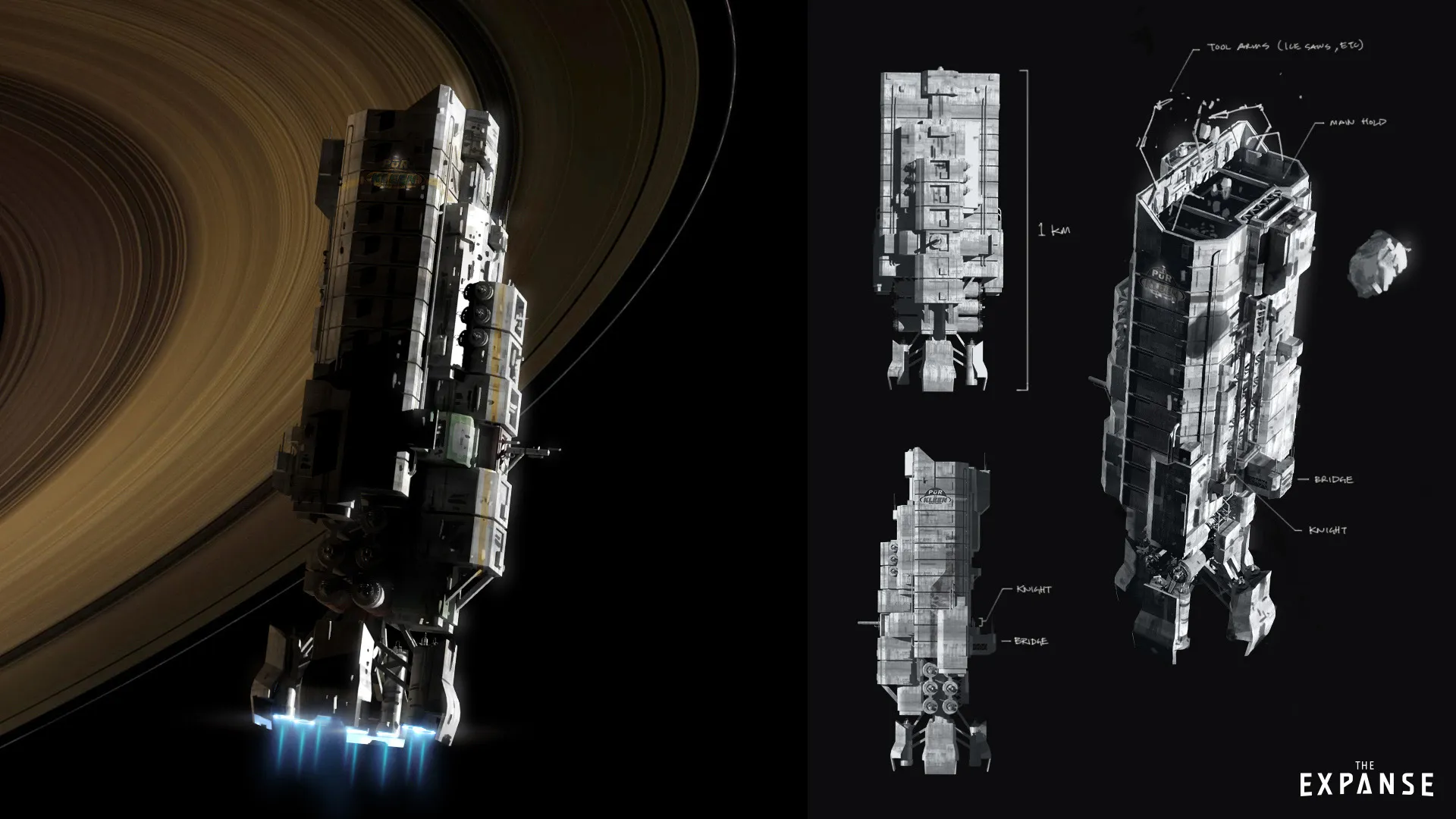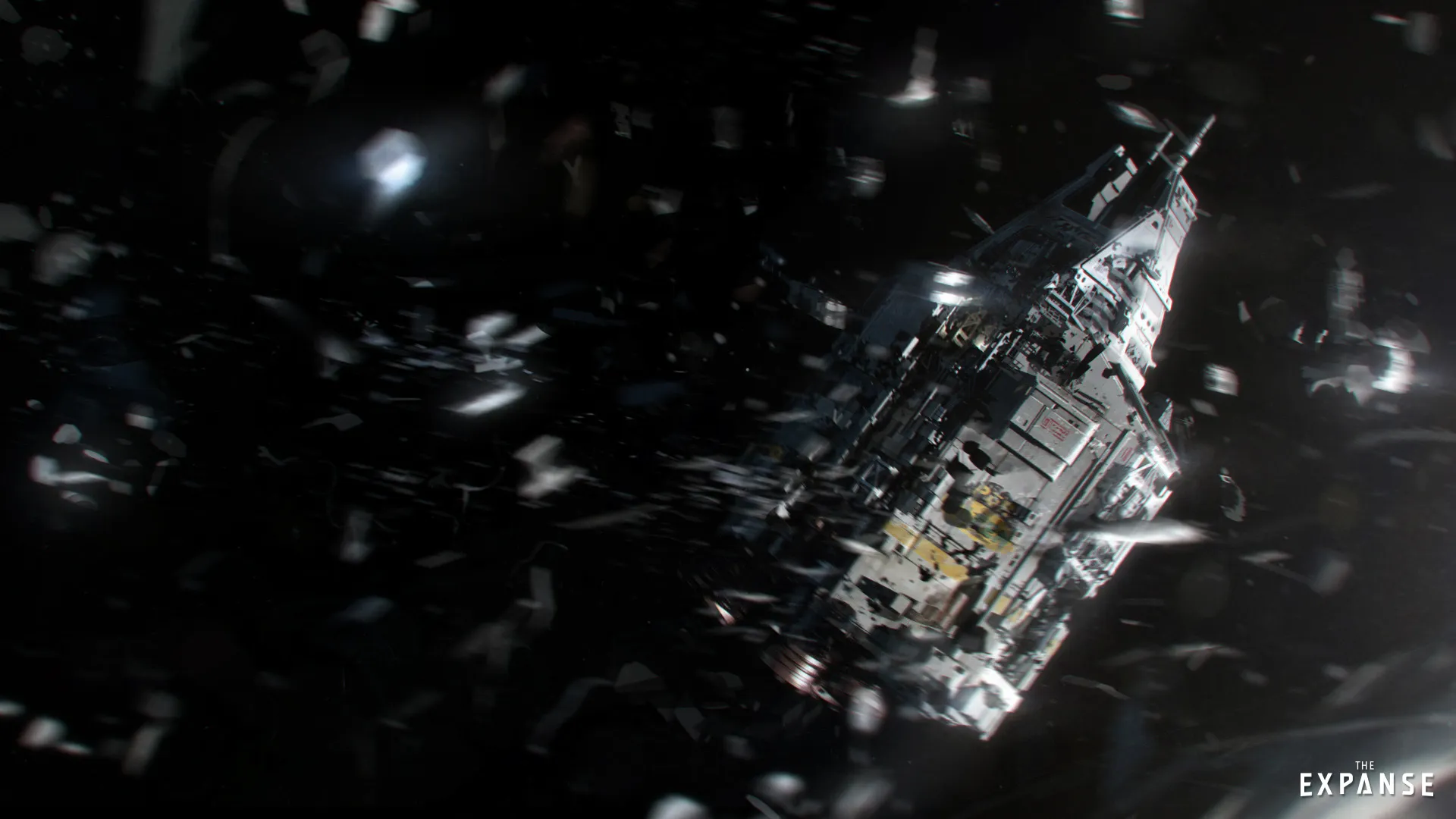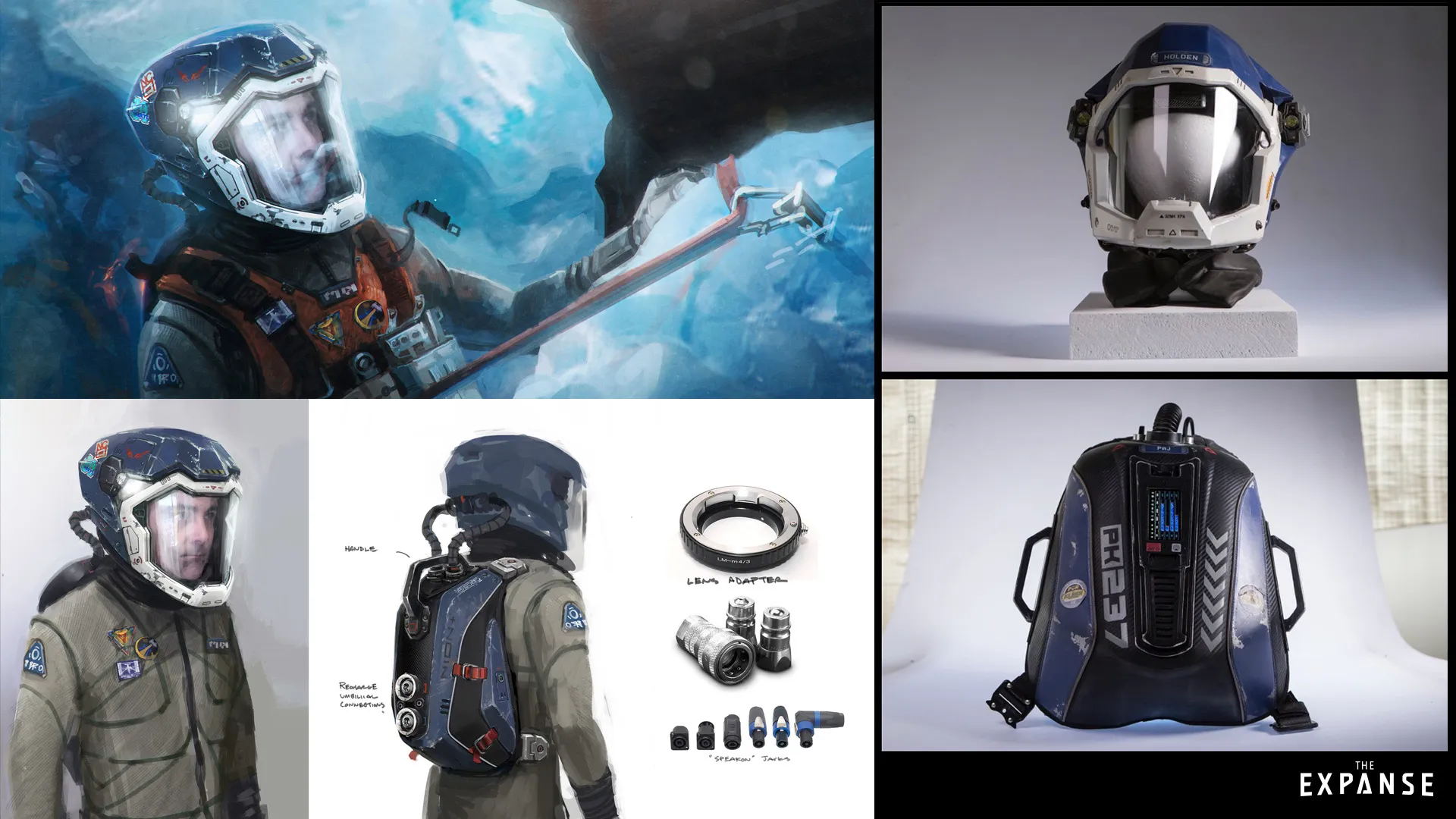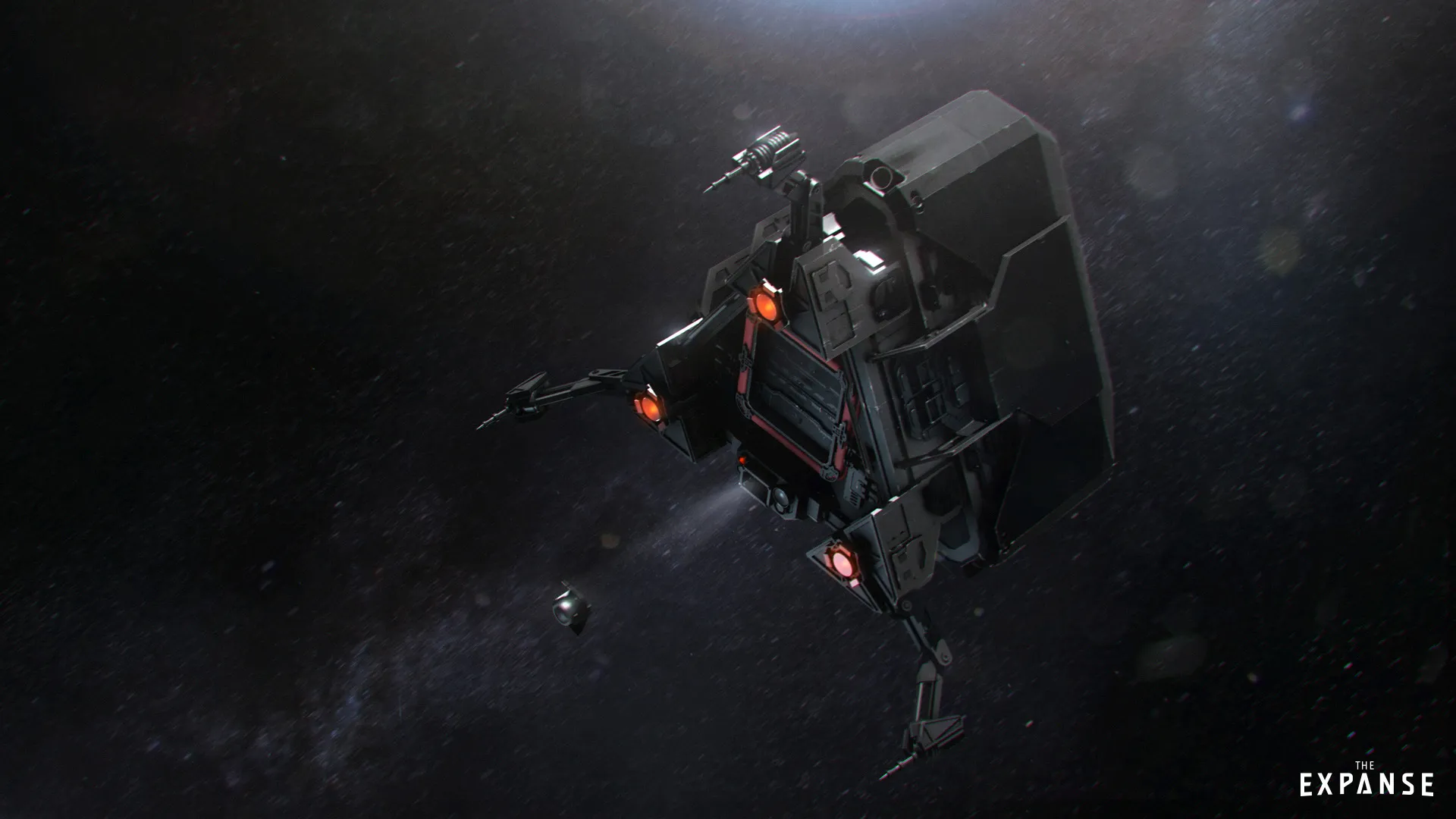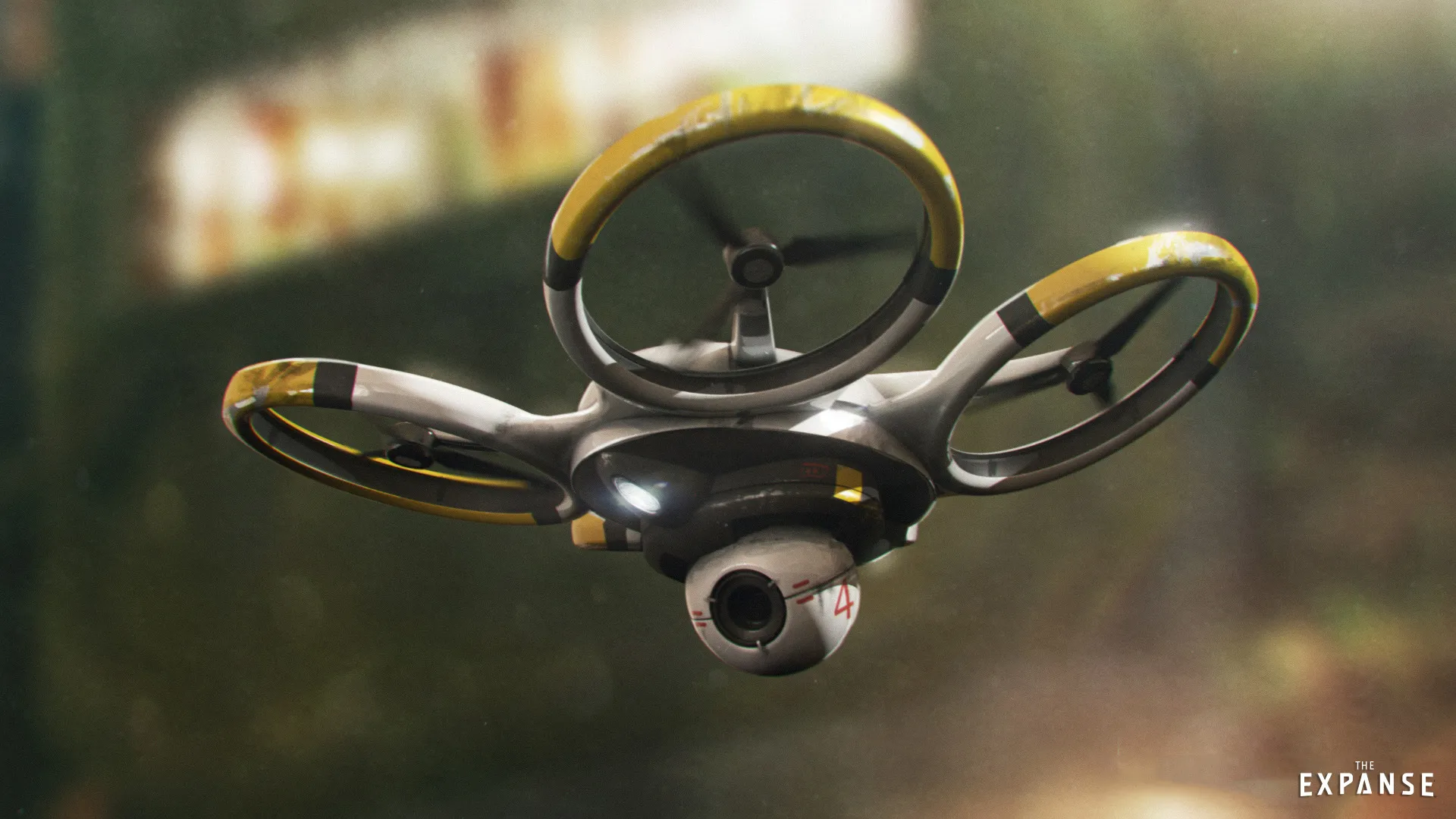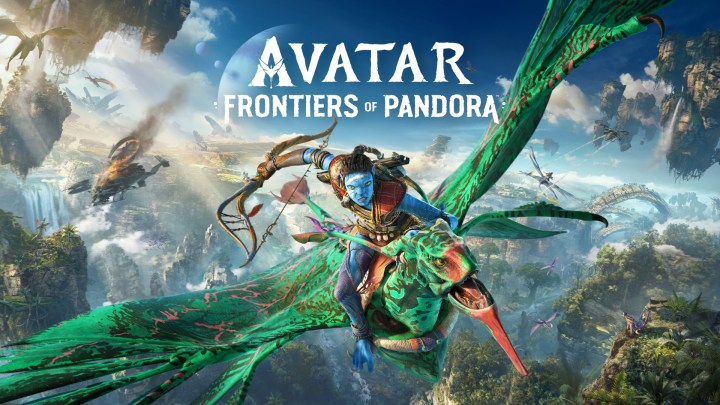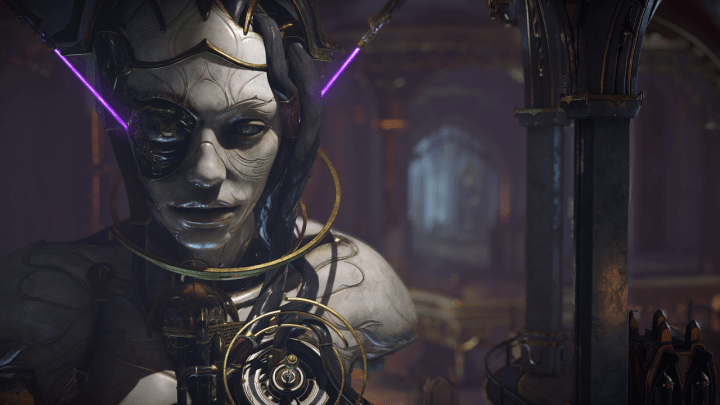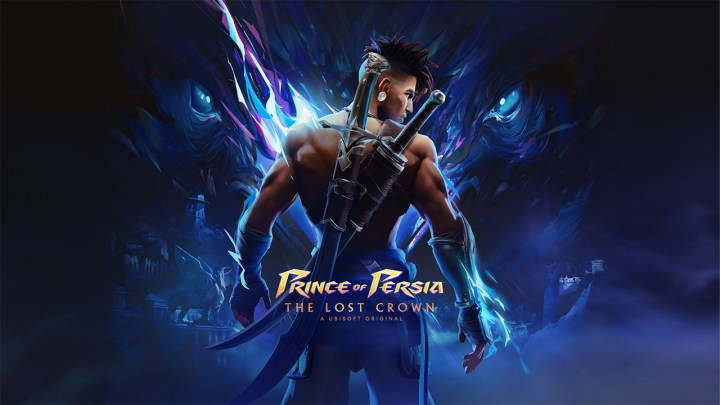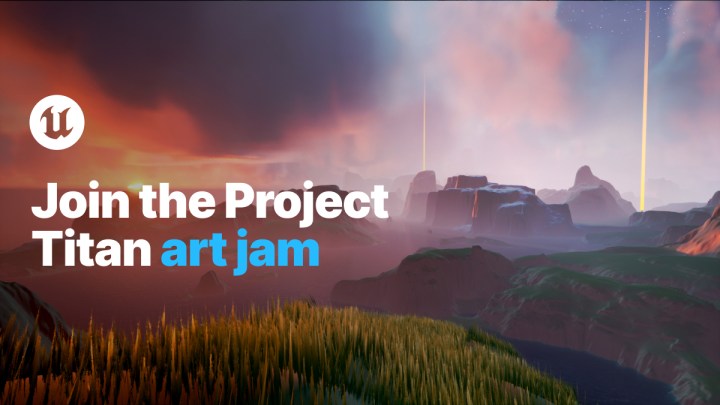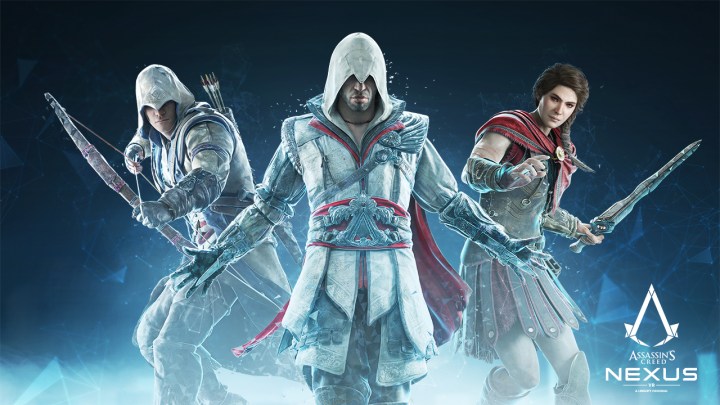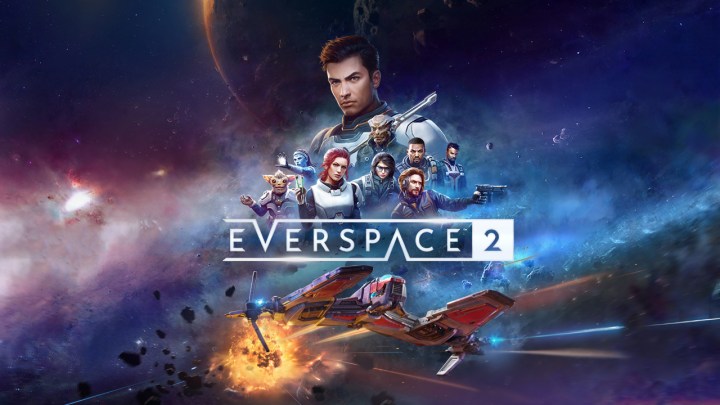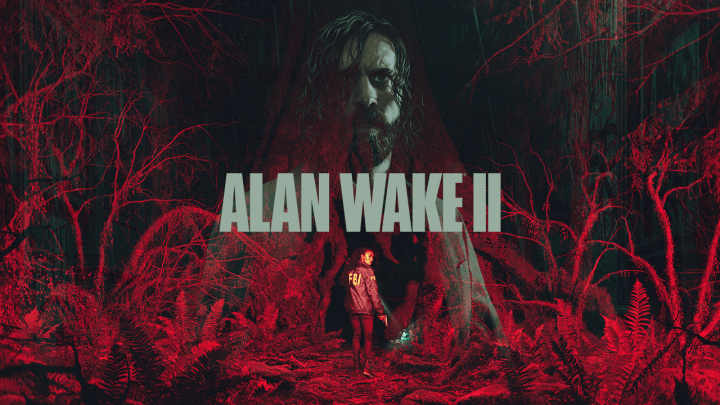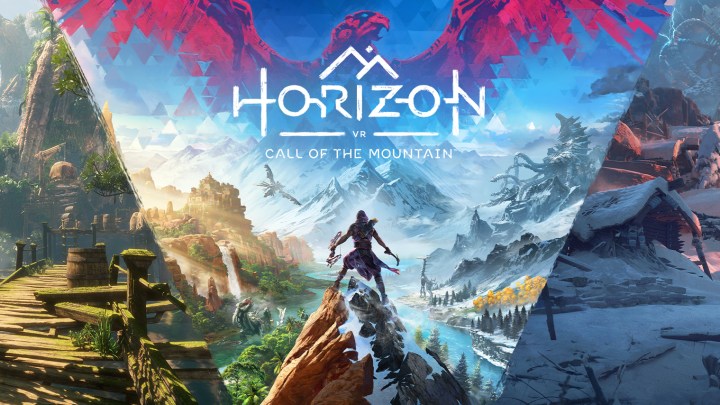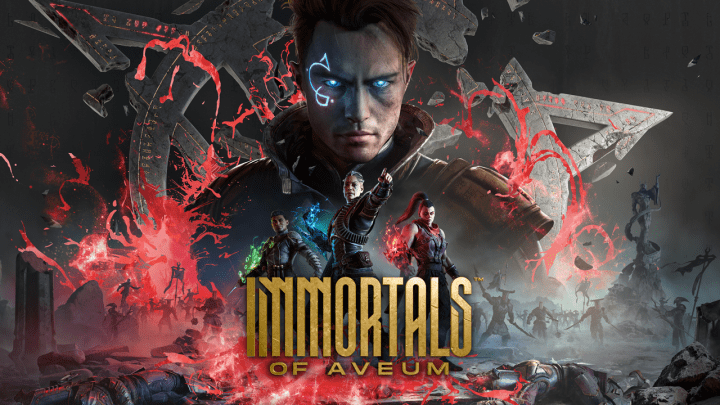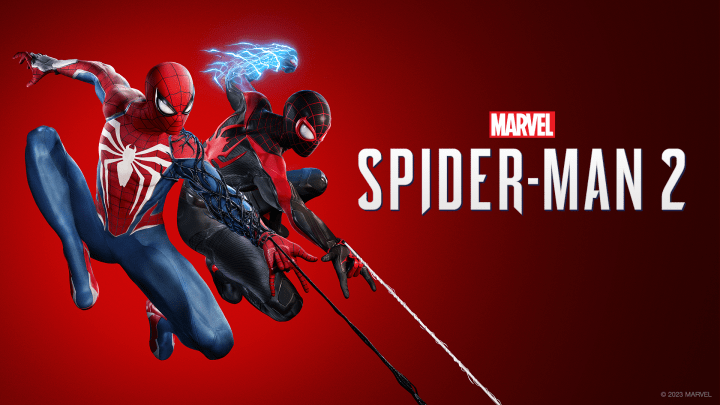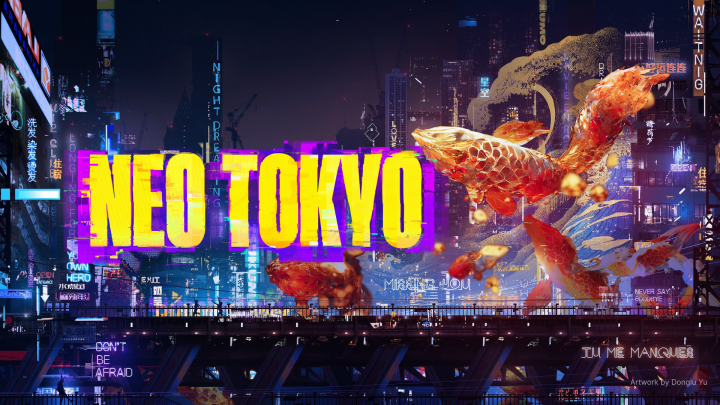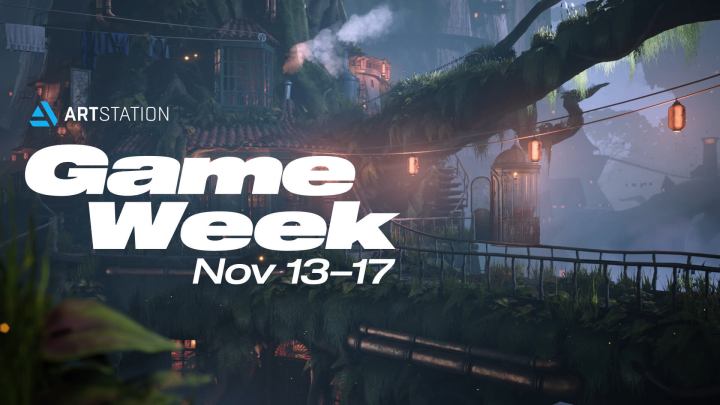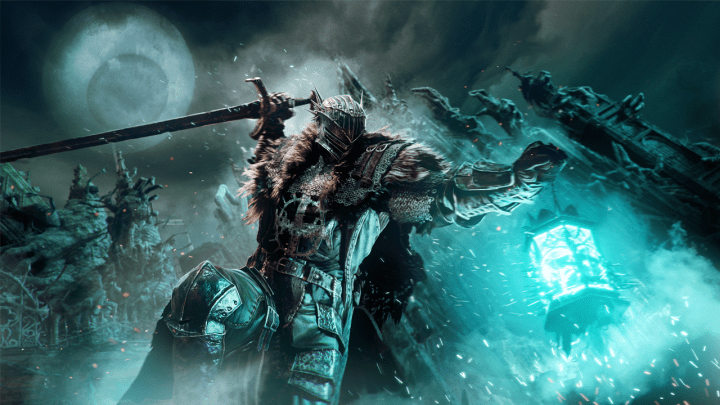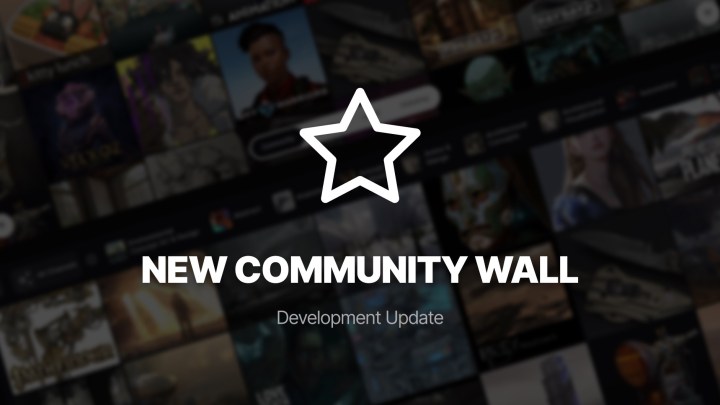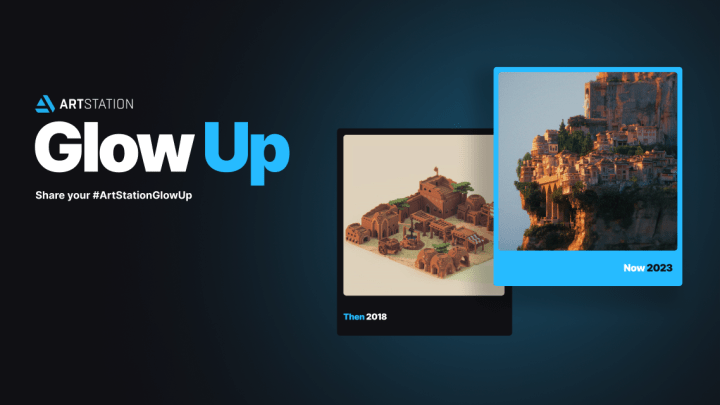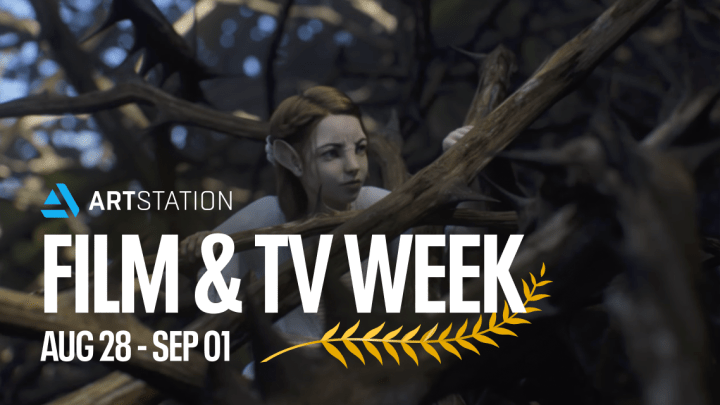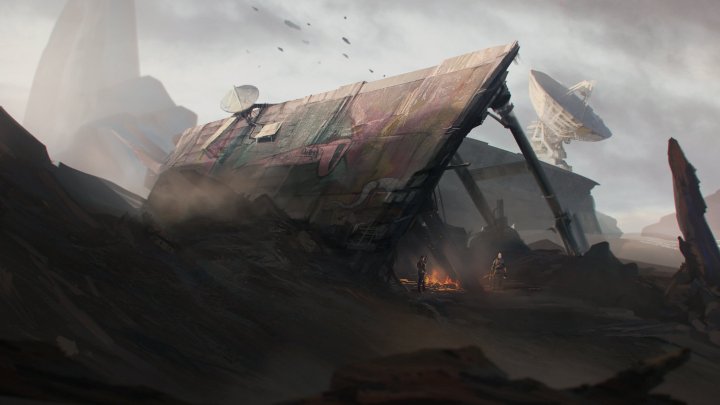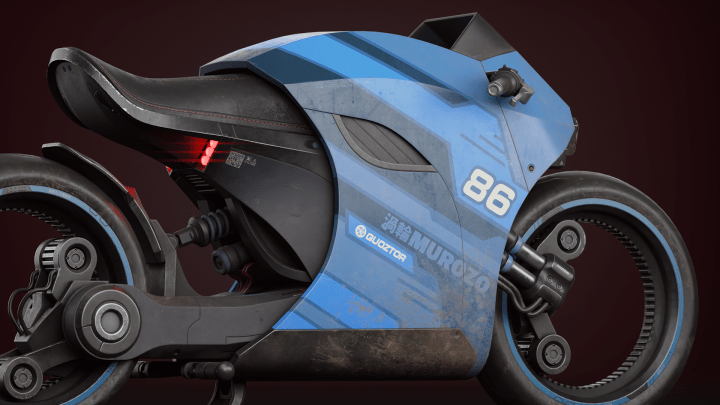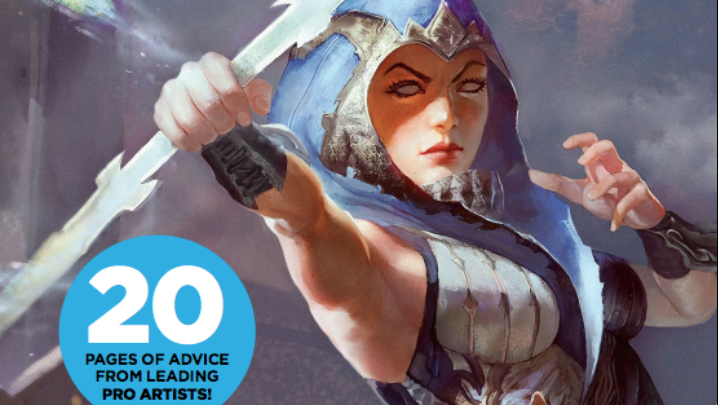Behind the scenes: the concept art of The Expanse
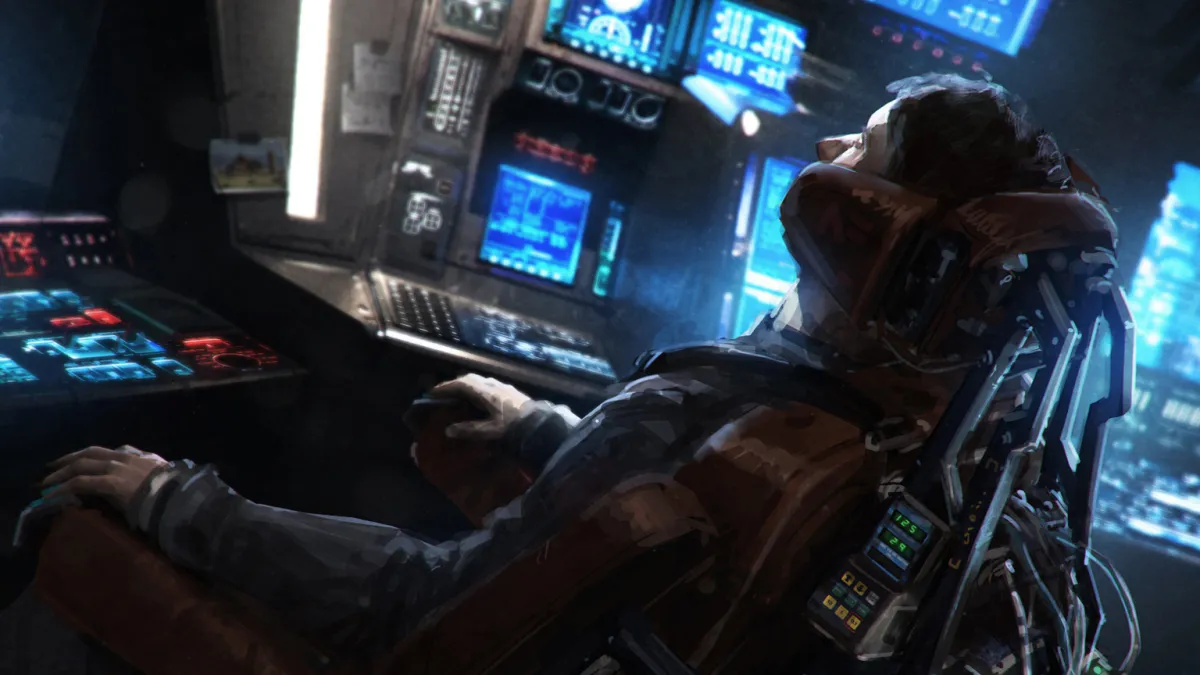
Right from the start, The Expanse looked like it was going to be special. Ars Technica called it “the best new science fiction series in years”. According to io9, it’s “the show we’ve been wanting since Battlestar Galactica”. And before the fifth episode had even screened, Syfy had picked up Alcon Entertainment’s gritty space opera for a second season.
Based on the Hugo Award-nominated series of novels by James S. A. Corey – the pen name of authors Daniel Abraham and Ty Franck, who also co-wrote the TV series – The Expanse takes place 200 years in the future, in a fully colonised solar system in which the human inhabitants of Earth, Mars and the asteroid belt teeter on the brink of war.
It’s dense, uncompromising stuff, building convincingly grimy worlds around its cast of deep-space miners and underworlders, and juxtaposing their struggles against a vast, steadily unfolding conspiracy. To bring those worlds to life – not to mention the show’s numerous ships, costumes and weapons – Alcon called on the design talents of Toronto’s North Front Studio.
Founded two years ago by games veteran Ryan Dening and movie concept artist and matte painter Tim Warnock, The Expanse was North Front’s biggest job to date, calling on the duo to create an ultra-detailed distant future grounded in today’s technology. We caught up with Tim and Ryan to find out about the challenges of designing with one eye on the 21st century and another on the stars.
How did you come to work on The Expanse?
 Tim Warnock: We were referred to the production through a client of ours that had connections on the show. They had an in-house art department – mainly people doing drafting and set design – but they were short on concept artists to do the visualisation of the ships and the environments. The work ended up lasting five or six months: not full-time, but we probably did about three months solid, then bits and pieces for the remainder.
Tim Warnock: We were referred to the production through a client of ours that had connections on the show. They had an in-house art department – mainly people doing drafting and set design – but they were short on concept artists to do the visualisation of the ships and the environments. The work ended up lasting five or six months: not full-time, but we probably did about three months solid, then bits and pieces for the remainder.
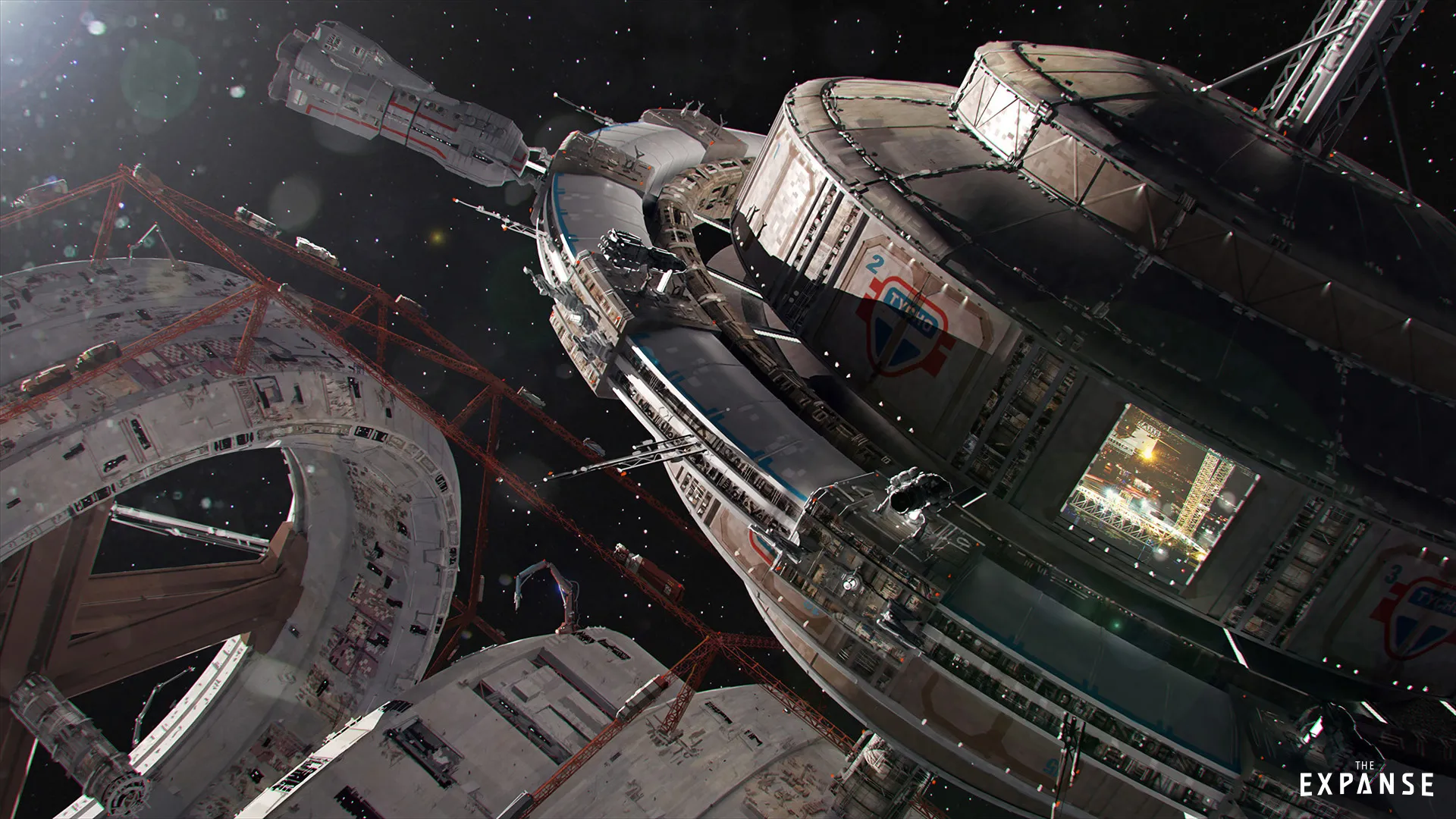
Tycho Station: a vast mobile construction platform. North Front’s concept designs evoke a detailed future grounded in contemporary technology.
How do you divide up the work between the two of you?
 RD: It’s been a learning experience. When North Front started, there was a bigger gap in our strengths; Tim was coming from matte painting and visual effects, and I was coming from videogame concept art. Now we’ve been doing it for a while, we still have our strengths, but we can take on whatever the other person [can do] so it’s a lot easier to divvy up the work.
RD: It’s been a learning experience. When North Front started, there was a bigger gap in our strengths; Tim was coming from matte painting and visual effects, and I was coming from videogame concept art. Now we’ve been doing it for a while, we still have our strengths, but we can take on whatever the other person [can do] so it’s a lot easier to divvy up the work.
TW: Ryan’s got way more mileage behind him in terms of tech design, so if there’s a spaceship, Ryan’s the guy to design it. He did pretty much all of the ships on The Expanse. My strengths are more in composition, lighting and mood; in illustration work.
RD: Before we met up, everything was paint and sketch [for me]. I didn’t do any 3D work, and my lighting was very illustrative. Tim’s coming from matte painting, creating this beautiful photorealistic imagery. The Expanse was the first thing we’ve done together where I was picking his brain about how to get things to look photographic. It was the first real crossover of our skills.
How did the design process work?
TW: Our primary contact was Seth Reed, the production designer. He’d assign the work and handle all of the feedback loops. We function as a remote studio, but our proximity to the production allowed for us to collaborate with the team in person.
RD: A lot of the time, Seth would have sketches of an idea for a spaceship or environment, and we’d go away with that and do a bunch of our own sketches, then he’d review those, then we’d keep refining the design.
How would you describe the aesthetic of the show?
TW: Pretty realistic. There’s a lot of science: there’s no artificial gravity, the ships aren’t going beyond the solar system, and [the planets] take a while to get to. But at the same time, it feels very much like space opera. It’s an interesting mix.
RD: The other thing is that there are no aliens in the show, so you don’t have cool alien-looking ships like in Star Trek, where the Cardassians and the Klingons have their own design languages, and the Ferenghi have kind of organic-looking ships. In this show, everything is a derivative of humanity.
So it’s futuristic, but with one foot in the 21st century?
RD: I think so. I’ve worked on a Star Trek game, I worked on Star Wars: The Old Republic for almost five years, I’ve done a lot of different spaceships, and you get to a point where it’s hard to come up with something different. What was nice about this show was that it’s all based on technology we have on [naval] ships now, like cannons and railguns: just way more advanced.
TW: Also, a lot relies on the thrust gravity, where the ships are always accelerating – that’s how the gravity is generated – so they were always designed vertically, like high-rise buildings. That was a fun challenge, and gave us an easy way to create a new look.
What constraints does that place on you as a designer?
TW: One one level, you’re trying to think about what is real. Most of the ships have conventional-looking rocket cones [for propulsion] rather than some kind of futuristic rectangular unit. But at the same time, you want stuff to look cool. You’re trying to balance the two: the design has its own personality, rather than passing every science test.
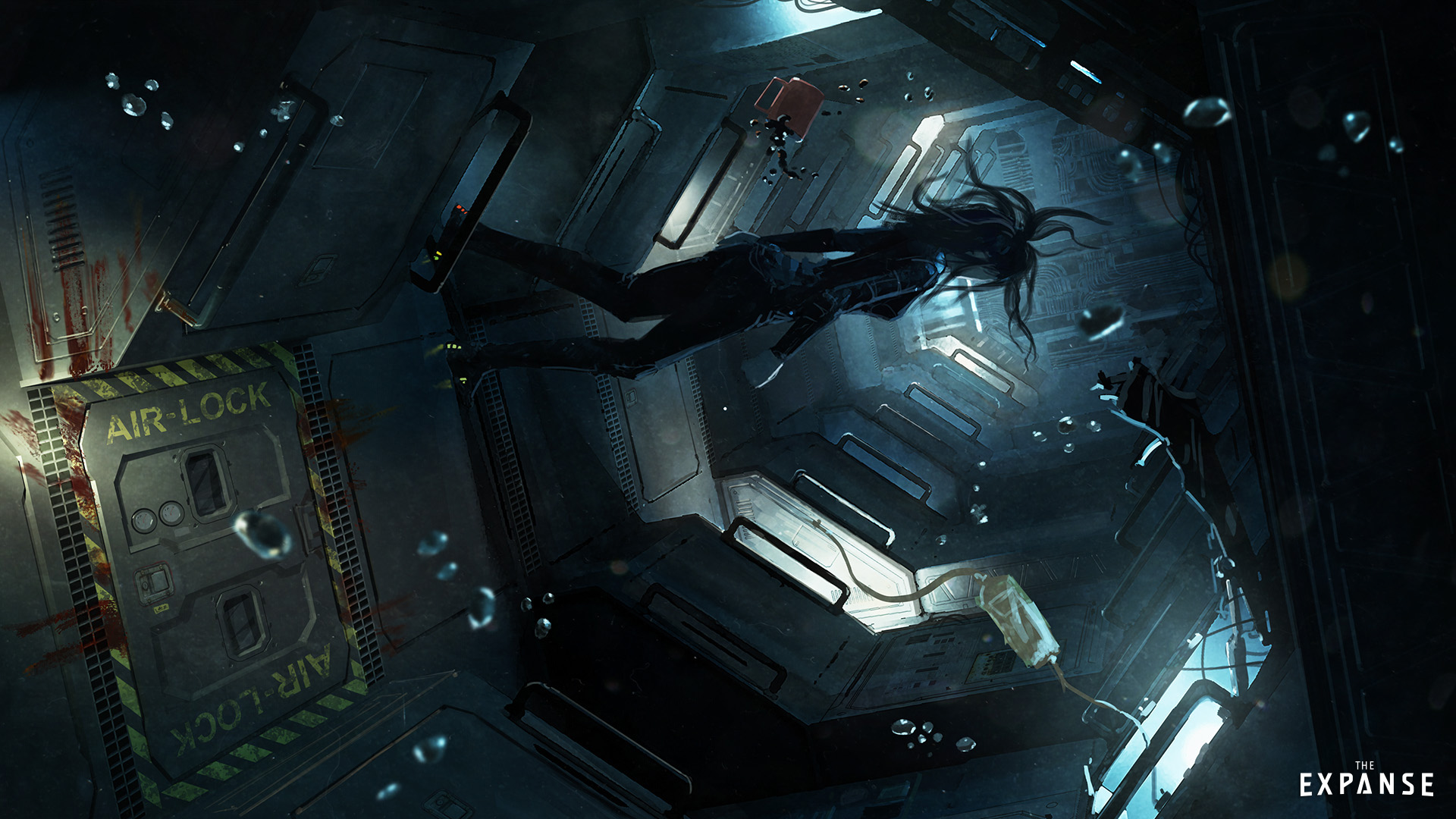
The interior of the mystery ship. Unlike The Expanse’s other spacecraft, this stealth vessel has a strange, asymmetric design.
How many different ship design styles did you create?
TW: There are the three factions: the Martians are super-advanced – they have a smaller navy than the UN, the Earth force, but it’s more modern – so their ships had a much sleeker look. You only see one of the UN ships, but it’s a bit more boxy, not as symmetrical. And then you’ve got the Belters, who are trying to eke out a living [in the asteroid belt], so they’re ‘truckers in space’. They have space buses, really old ships – one of them has been around for almost 100 years.
RD: And then there was a secret ship, a stealth ship that comes in, so that had to have its own look too. That was interesting, because throughout the production, the team wanted the designs to be more symmetrical, and [when it came to that one] they wanted it to look more random and weird so it stood out. It’s an odd-looking shape; it doesn’t really make a ton of sense.
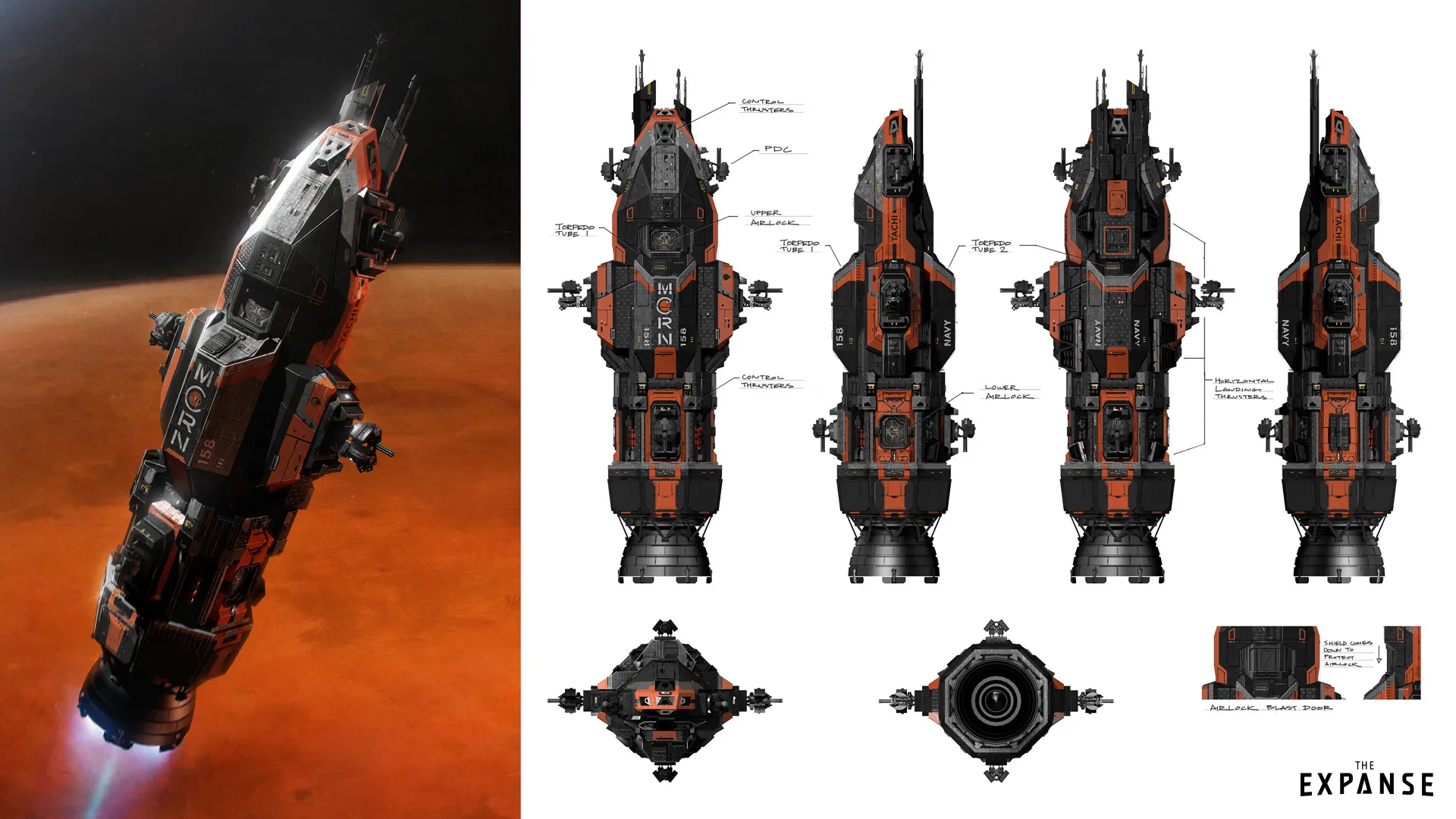
The exterior of the Rocinante. The Expanse’s equivalent of the Millennium Falcon, the ‘Roci’ was one of the show’s main design challenges.
One of your key designs is the Rocinante, the main characters’ ship. How did it evolve?
RD: Because the Rocinante was going to be the hero ship, there was a lot of pressure to come up with something [good]. It’s like the Millennium Falcon of the show.
By the time we started work, we’d already done a design for the Donnager, which is a Martian capital ship, so we had a language in process already. Seth had a pencil sketch – just basic ideas, [the vertical layout] and the big cone – and I did a sheet with a whole bunch of different ideas for him.
We ended up designing the Rocinante vertically on a side view: Seth was really interested in the proportions from the side. I did bunch of elevation sketches, so we kept honing in on those. Once we got one he liked, I built a block-in model in Modo, and did a basic render [and paint-over].
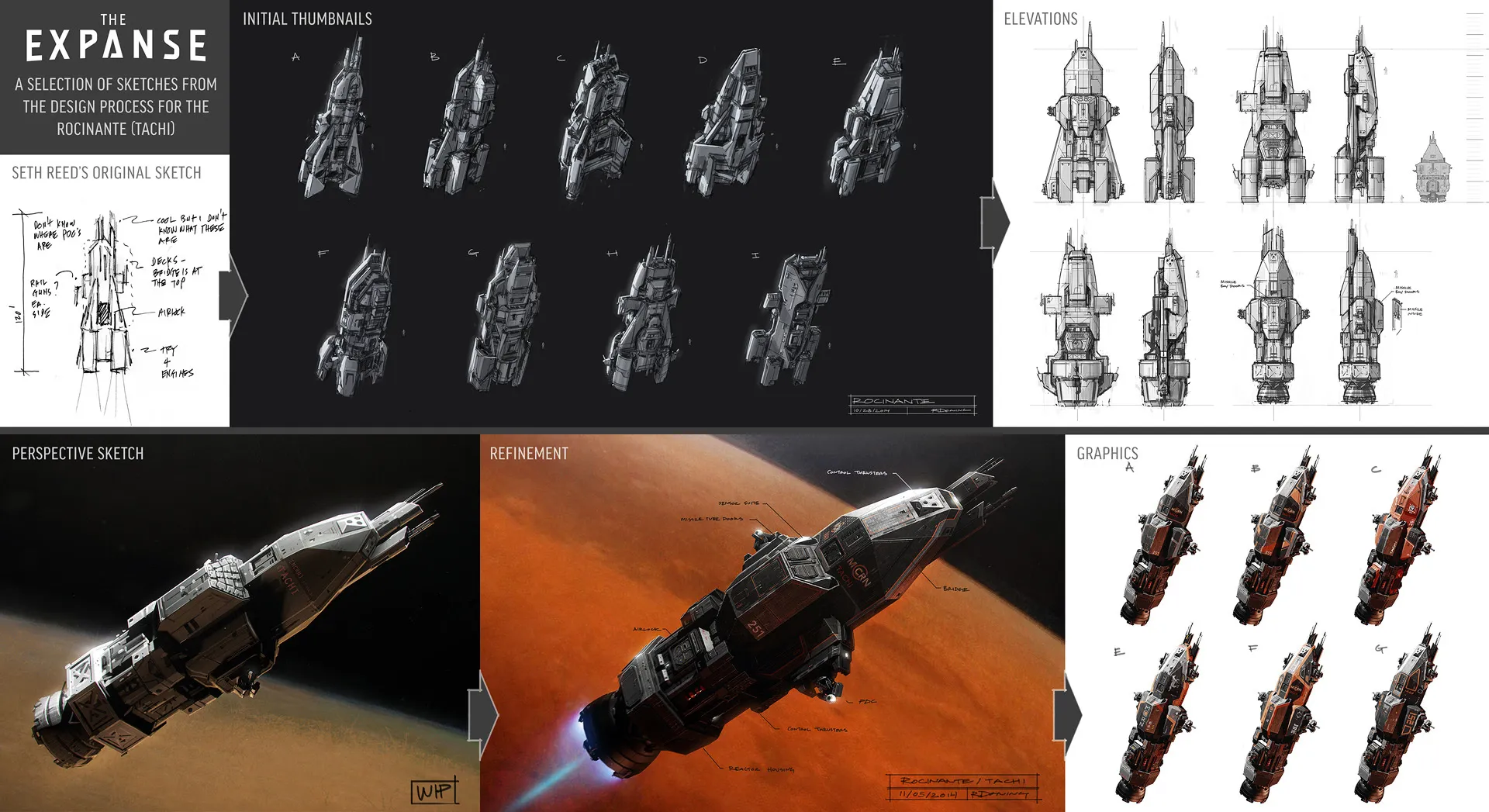
The evolution of the Rocinante: Seth Reed’s initial sketch, North Front’s early variants, elevations, block-in and refined models, and graphics pass.
From there, we started talking about what’s on the surface of the ship: it’s covered in [heat-resistant] tiles, like the Space Shuttle, and then we had to layer on guns. I started off with fewer, but the team wanted more, so we ended up with six cannons, then had to work out where to put them.
The Rocinante had to be able to re-enter the atmosphere and land either horizontally or vertically, so that was another challenge: I designed it so it could land on its side, with thrusters all the way along. And when it goes into the atmosphere, what happens to the guns? It looked like they’d burn off, so I did some sketches for the VFX team showing how they could fold up.
The production team also built [an interior set] with a door, so we had to retrofit the door into the design. It was pretty fast: they were building and filming while we were still designing the ships for the visual effects.
And then we did a graphics pass: I think there were 10 different sheets of paint designs. One of the fun things is that when [the main characters] take the Rocinante from the Martians, they disguise it, so Tim took over the disguise work: he painted it all grey, and put these big gas cylinder tanks all over it.
TW: It’s meant to be a gas freighter, so it has a whole other paint job. There’s a story point where one of the characters is painting pin-up art on the side of the ship. You actually see him tied to the hull, floating in space…
RD: …painting with a kind of a sci-fi spray brush thing…
TW: …that magically makes pictures on ships. [Laughs]
How difficult was it to reconcile all of those different requirements?
RD: The design had to go through a lot of loops. Seth knew what he wanted, but the writers – who had been living with the ship in their minds for a long time – had very specific requirements, like [how it could fire missiles] without affecting its own velocity. So we were trying to come up with something cool, that fitted with the vertical rocket shape, and that was still manoeuvrable.
And at the same time, time was pretty tight, so we were trying to pack in as much of this information as we could and shorthanding a lot of it, sketching on bits that weren’t fully thought out, but trying to make it look as if they’d work. I even did a cross-section of the inside for myself to make sure that you could still fit people in, because it’s so packed with gear.
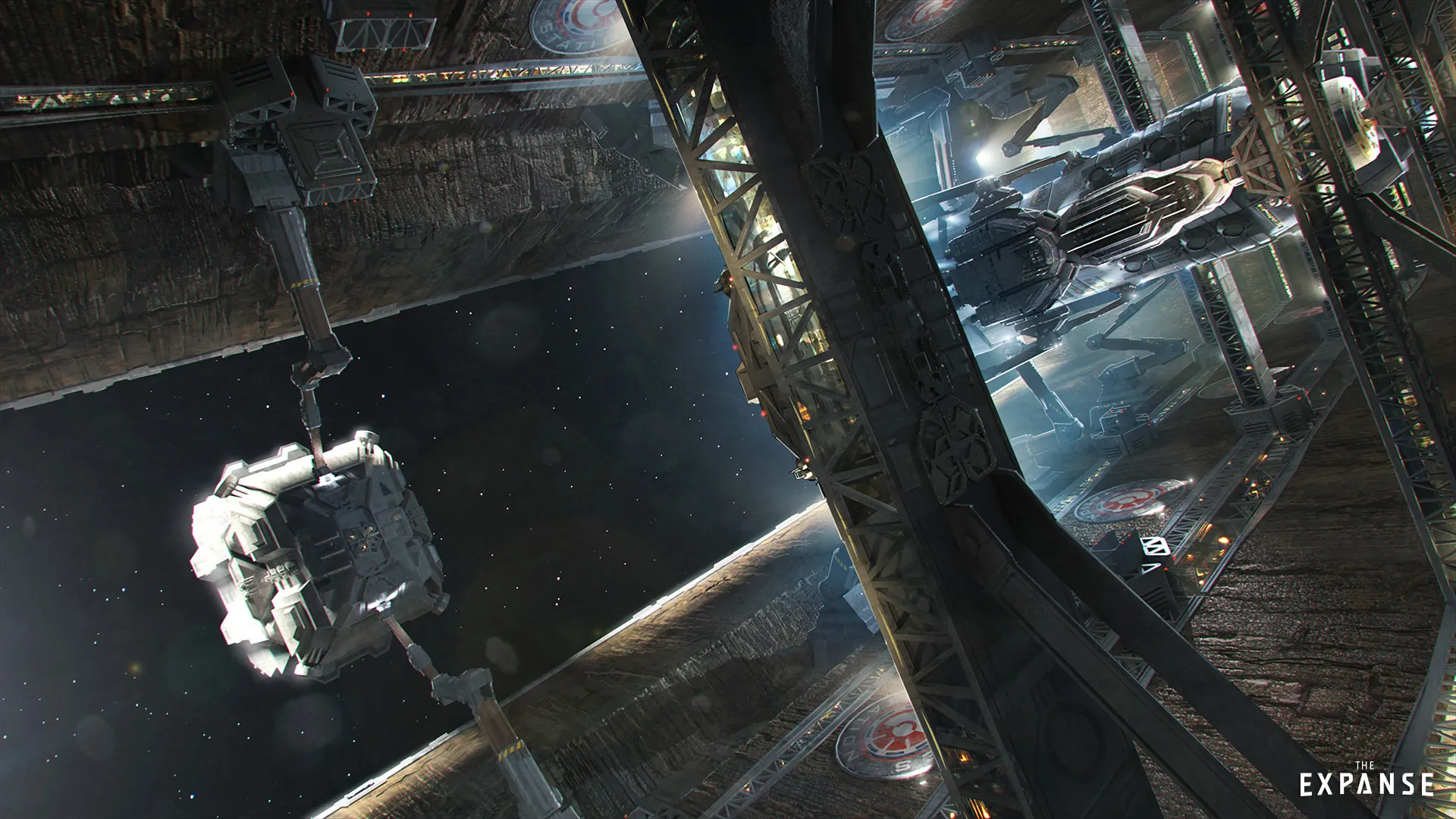
The docks on Ceres. The extending arms grasp ships and hold them until their rotation matches that of the asteroid colony.
You also contributed to the design of Ceres, one of The Expanse’s key locations. Talk us through the work.
TW: It’s an asteroid, but [the Tycho Manufacturing corporation] has put a spin on it to generate gravity. They’ve mined the inside to create these kind of ant colonies [where the Belters live].
We did a lot of illustrations – all synthetic: we had no limitation in terms of having to tie into the live action – but once you get inside, [the production team had built a lot of] partial sets, so we had to work out what set extensions were needed. It became a process of art direction for visual effects, talking to the DoP about the lighting they were planning to use on set, and to the graphics guys, who were designing all the signage.
[We had to show] how the characters were going to look like in the scene, and how they get oxygen in there. There’s greenery growing everywhere: they’ve got all of these pipes and ventilation systems that are integrated with plant growth, and all these containers of algae that are their life support system. All of the architecture is 3D printed, so it has this Lego block feel to it, where there are only three to five units, all painted differently.
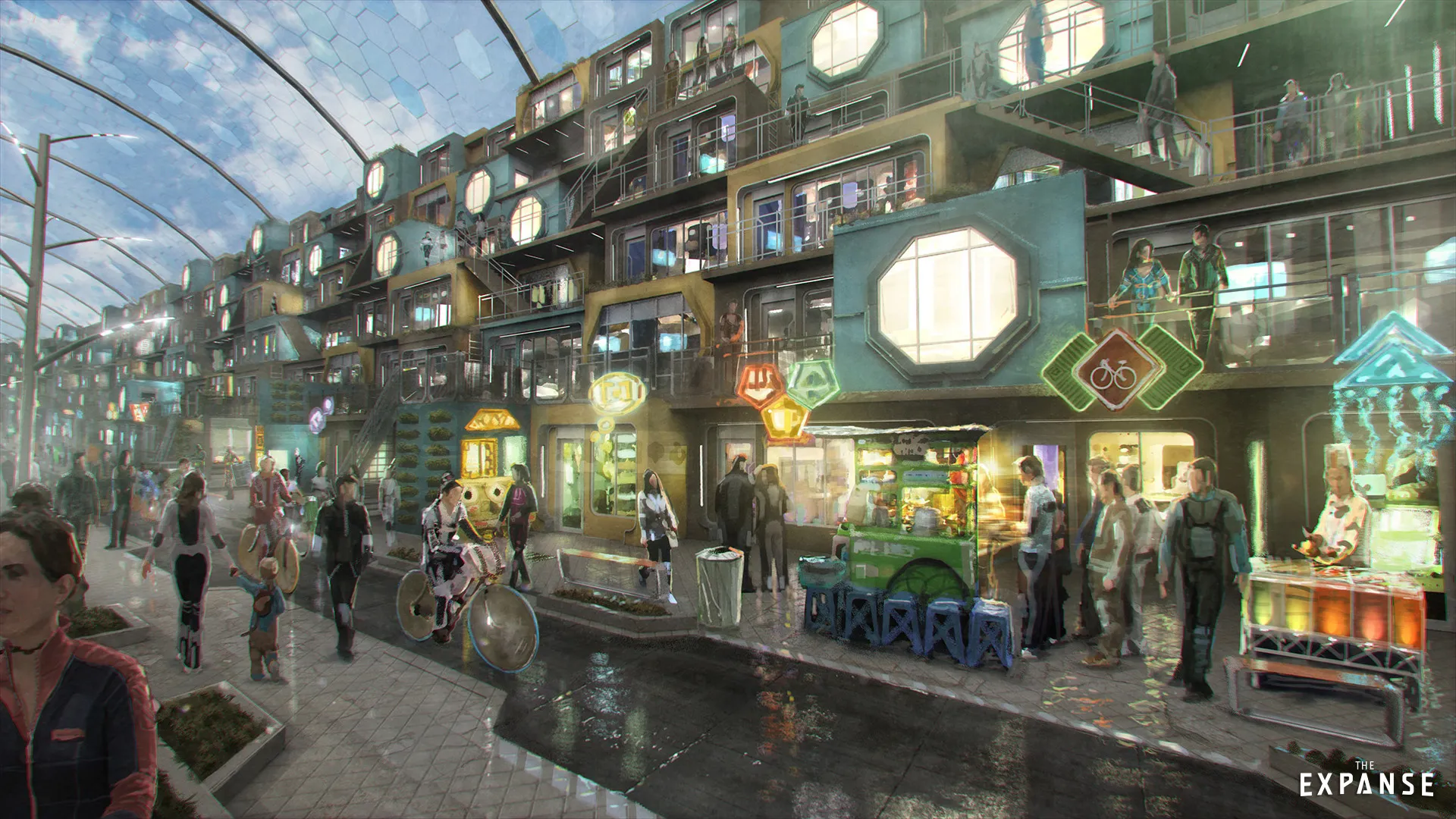
The asteroid colony’s upmarket district, mid-town Ceres is light and airy, even featuring an artificial digital sky.
There are also different layers of the culture: there’s the upper-class level, which is much cleaner and a little more colourful; they’ve got an artificial digital sky on the ceiling. Then as you go down to the Medina level, it’s exposed rock, everything is more ramshackle, and that’s where the red light district is. It’s more Blade Runner-ish.
Was that a deliberate reference?
TW: I don’t know if it was a deliberate decision on the production team’s part, but you can’t get it out of your mind when you’re looking at that stuff. The Medina level is dark, it’s dank; it’s where the criminal element is. It’s an intimidating place. But it’s also where people’s lives are, so there are businesses there. And it’s colourful. They’ve got all these luminous vials of street food. It has the feel of Asian cities like Tokyo or Hong Kong.
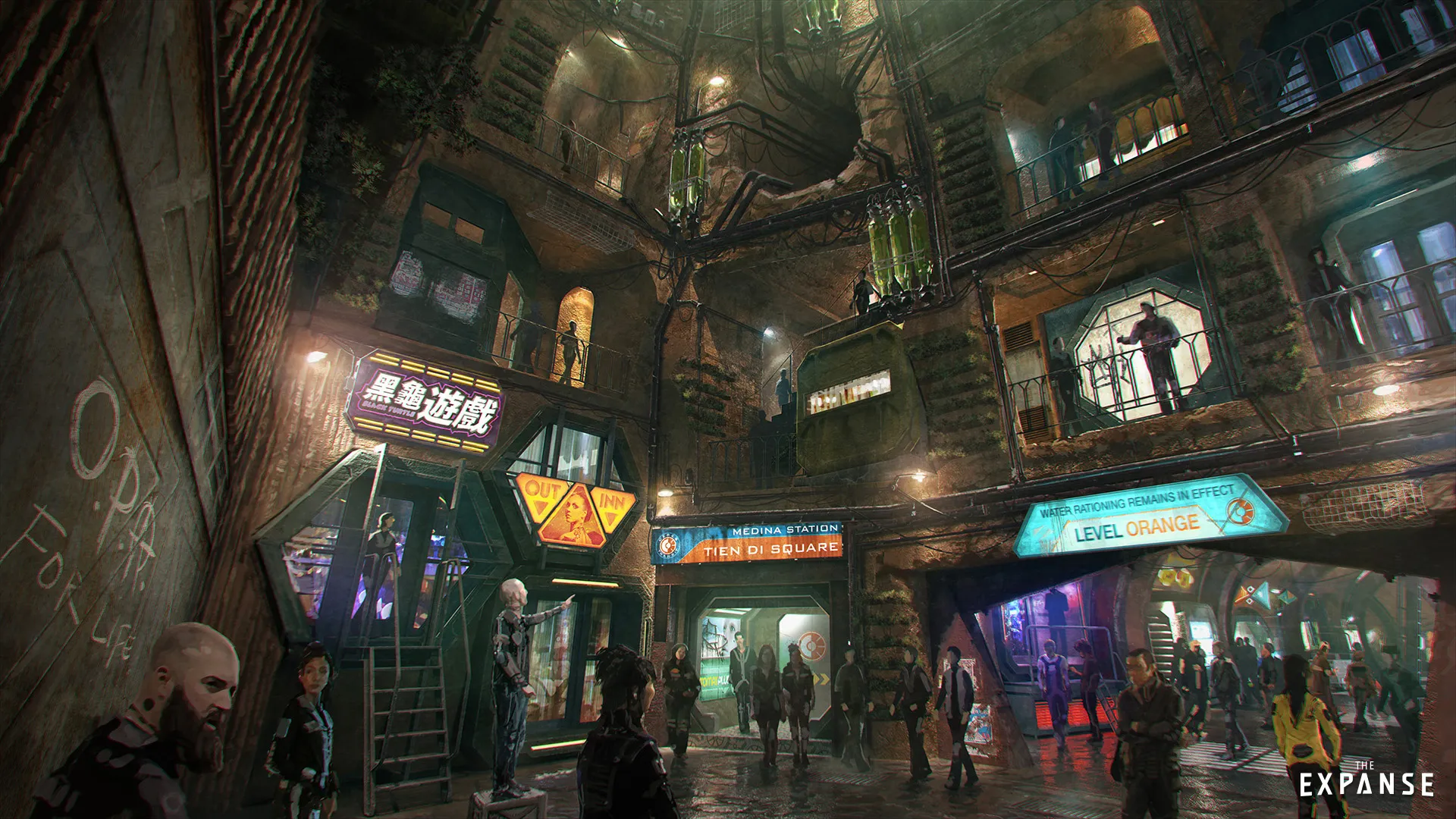
The Medina level on Ceres. With its claustrophobic, neon-drenched atmosphere, the design nods to classic sci-fi movies like Blade Runner.
Looking back on it now, was working on The Expanse a good experience?
TW: Definitely. There were a lot of firsts for us. I’d never been part of pre-production, working with the art department to get things built physically. We were designing guns and helmets and backpacks, and to see the process was fascinating. Everything I’d done before only got made in the computer, so it was really rewarding to be able to hold something I’d worked on.
A lot of the film work I’ve been involved in was focused on matte painting and CG environments, so I was always the guy who had to spend months building huge digital sets. It was really nice just to make cool pictures and have somebody else [build them]. It has been really rewarding to see our work brought to life by the VFX artists under Bob Munroe‘s supervision.
RD: I’d designed the inside of ships for games before, and it was always fun to walk around them in the game, but there was something neat about going on set in the Rocinante. I didn’t design the inside – that was all the production designer and his crew – but I had made a place for the door on the outside, so to stand inside it was kind of fun: ‘Hey, I’m actually on this ship!’
TW: It was amazing to see how [the crew] made the touchscreens: getting iPads and TV screens and putting new mounts on them – all the interesting ways they kitbash real-life objects. It’s amazing how fast these guys work, and how creative it is.
With the guns and backpacks, we’d do [fairly detailed] sketches, but it wasn’t like we were drafting them out: the props people would have a fair amount of latitude. But when [you design] a set, it has to be structurally sound. You realise how easy you have it when you just need to make an image look awesome [and not worry whether] anyone is going to get killed standing on it. It gave me a huge respect for the people in the art department.
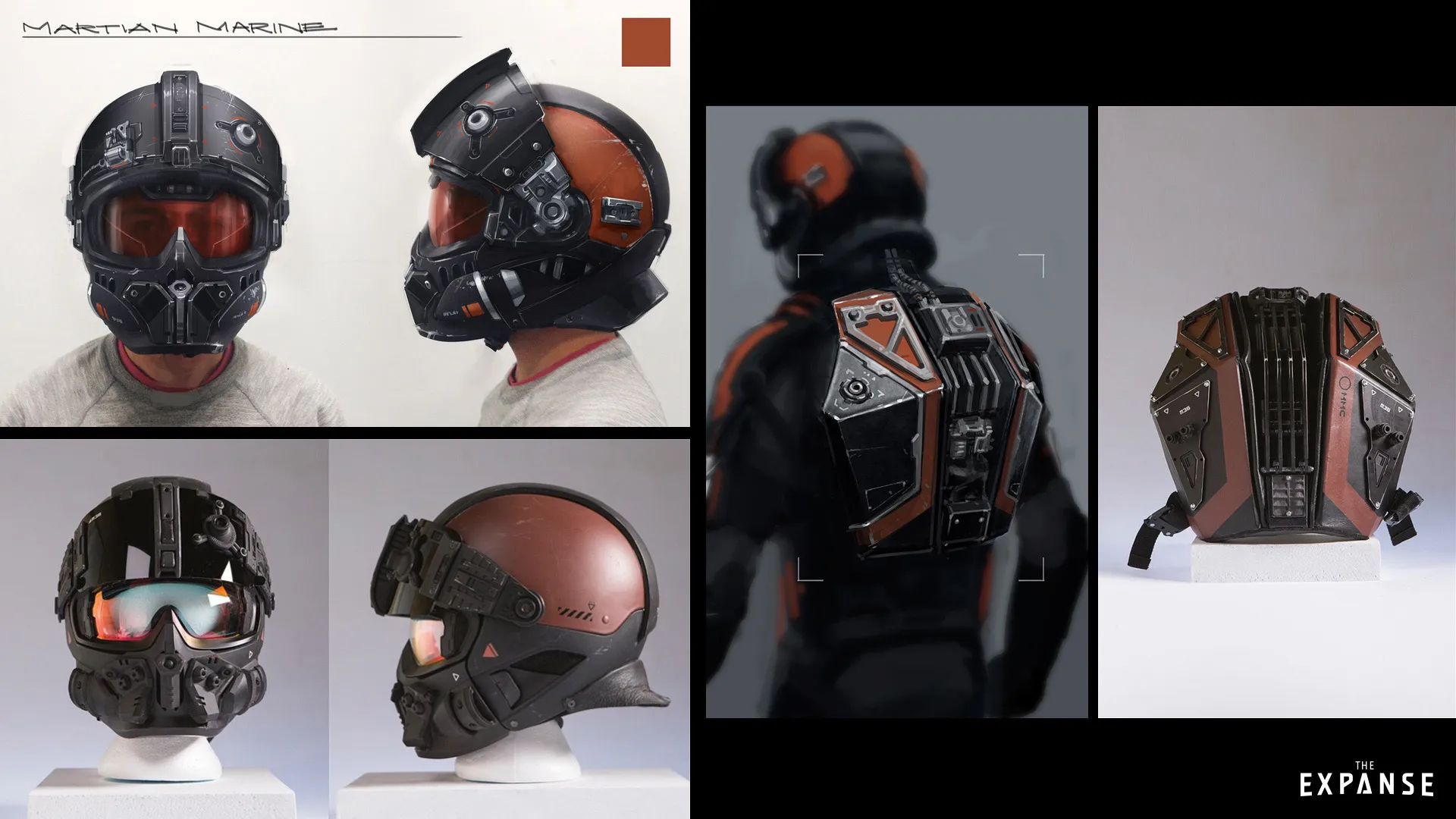
Helmet designs for the Martian marines. As well as ships and environments, North Front designed key costumes and props.
Have you been surprised by the reviews the show has been getting?
RD: I like Star Trek a lot; I really enjoyed Star Wars. I like old shows like Battlestar Galactica and Buck Rogers. So I always thought it would be the kind of show I’d be really into.
TW: Reading the script, right away, it was: ‘This is going to be so awesome.’ For a television show, it’s so ambitious; there are so many sets and ships. It’s hitting that feature-film level of production.
Syfy has already picked the show up for a second season. Do you get to work on series two?
TW: We hope so.
RD: We’d love to. The Expanse was definitely a highlight of my career up to now. Everything has its moments, but Tim and I are really proud of the work we did.
TW: And the volume of work was exponentially more than we’d had to show [for any previous job]. We’re thrilled to have been able to do so many cool pieces in such a short period of time. It was super-satisfying to look back and think: ‘We did all that’.
The Expanse is broadcast on Tuesdays on Syfy. If you’re in North America, you can also watch episodes in full on the show’s website. See more concept art from The Expanse on North Front‘s website, or in Ryan Dening and Tim Warnock‘s ArtStation galleries.
